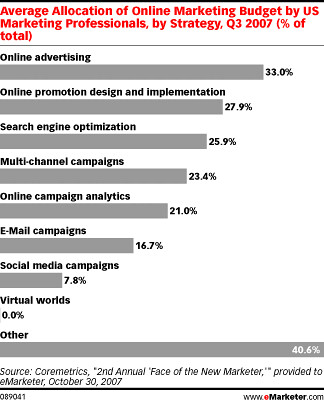Communications professional, meet your new colleague, the mash-up communicator. This is the marketing student that has just graduated college or university, and who is equipped with a set of very different skills:
“Shrink, storyteller, financial wiz, global diplomat, used car salesman, communicator, community builder and code monkey are just some of the personas for a newly minted marketer to have handy (along with that MBA).”
Becky Ebenkamp writes in Brandweek: “In sum, this is not your father’s marketing career.”
I remember when I joined the Norwegian PR agency Geelmuyden.Kiese almost a decade ago (ouch!) that they made a big deal out of hiring people with vastly different backgrounds; journalists, marketers, economists, even poets. And they had a point. If you bring a group of people with diverse skills together they will probably be more creative and do a better job than if they are clones of each other. Sure there are professional services organizations, like management consulting firms, that operate with strict business models in which people are trained to work in a certain manner and where similar backgrounds and knowledge bases are an advantage. But for a creative profession like PR consulting there are clear benefits with variation.
The difference now is that these qualities need to exist within the same person and not just within a group.
“People who have cross-fertilization—both by function and by geography—are highly in demand,” said Jane M. Stevenson, global managing partner of executive search firm Heidrick & Struggles, Chicago. “The marketing executive who has been in a finance or sales role as part of their development, and, who maybe worked in Europe or Asia as well as North America. Those are the people who get paid the premium once they get to the top.”
If we look at the current media revolution there are still many PR professionals that have taken no or little interest in the new social media tools. I can imagine that communicators that choose not to embrace web 2.0 technology in a few years time will be seen as PR dinosaurs – creatures on the brink of extinction, not fit to survive under new conditions. Add to that a new generation of marketers that are multi-skilled, multi-experienced and who can multi-task like you wouldn’t believe. Now that will be an interesting sight. Last year one of the big Swedish tech compaines offered 1,000 employees over 35 (!) severance pay because they needed to get more young staff into the company. Wouldn’t that be something, PR agencies showing 35 year olds the door because their skills are outdated?
When the Swedish recruitment company Hammer & Hanborg surveyed 3,062 people in the communications business about their profession, a conclusion was that in 5-10 years time “the increased breadth of communication possibilies will force communicators to become more specialized in order to utilize all channels to their fullest potential”.
I think you probably could look at the classic “T-profile”, meaning that you need breadth in competence but also a field in which you are specialized. Can it be that within the next few years both the horizontal and vertical bars of the “T” need to expand in order to succeed in the communication industry? Your thoughts?
Tags: public+relations, pr, jobb, kommunikation, reklam. Ping.
 I got a very nice email the other day from Guy Kawasaki telling me that Media Culpa has been included in the Social Media section of Alltop. Alltop is a site that aggregates feeds from selected sites within different categories and then displays the headlines of the latest stories from these news sites and blogs.
I got a very nice email the other day from Guy Kawasaki telling me that Media Culpa has been included in the Social Media section of Alltop. Alltop is a site that aggregates feeds from selected sites within different categories and then displays the headlines of the latest stories from these news sites and blogs. 